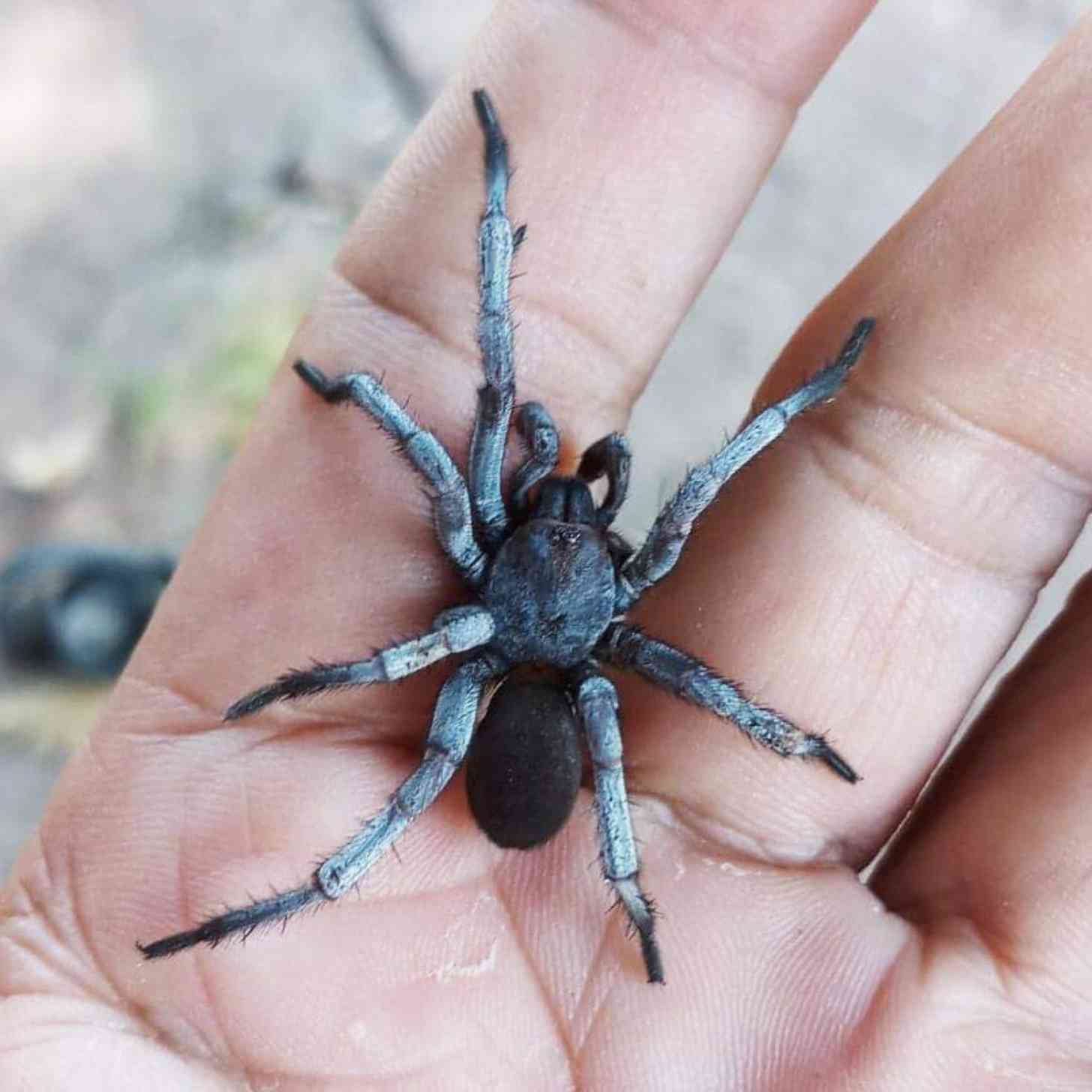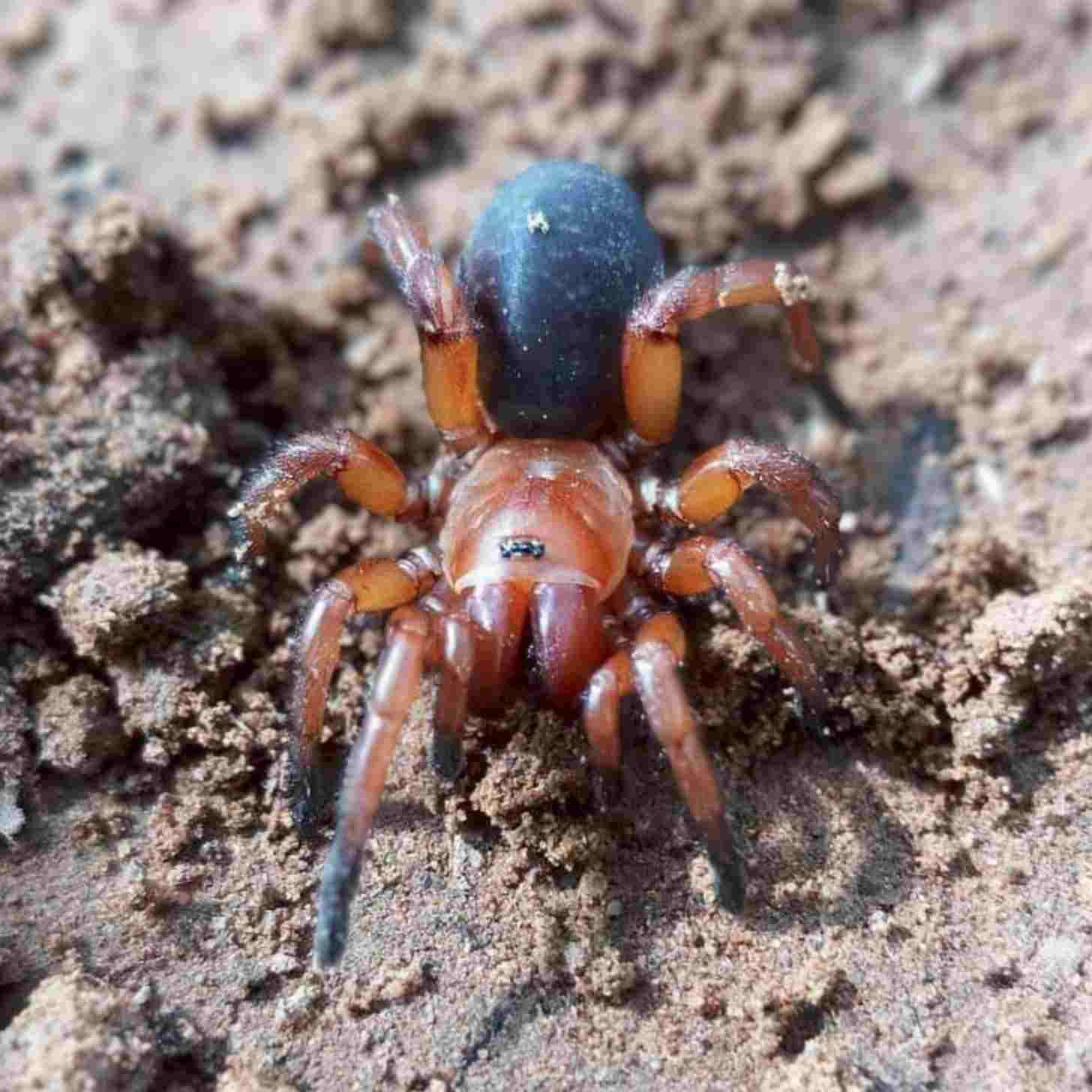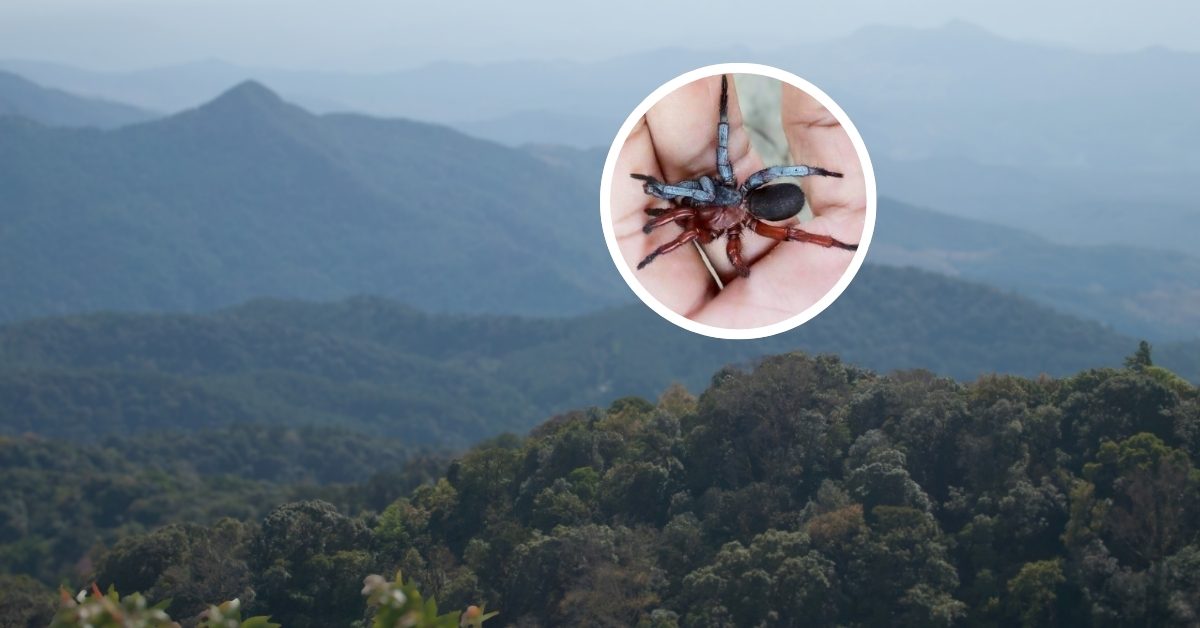Researchers at the Chulalongkorn University Museum of Natural History have identified a new species of spider found in the forests of Kanchanaburi, Thailand.
The specimens they collected included both blue-gray males and orange females, which were morphologically distinct from any other type of burrowing spider.
But one spider in particular was especially notable: It was orange on its left side and blue-gray on its right side, exhibiting a rare condition known as bilateral gynandromorphism.
In an email interview with Forbes, lead researcher and entomologist Chawakorn Kunsete delineated the difference between hermaphrodites and gynandromorphs, which are commonly mistaken for each other.
“Hermaphrodites are organisms that naturally possess both male and female reproductive organs with bilateral symmetry, such as earthworms or certain plants like roses,” Kunsete explained.
“Gynandromorphs, in contrast, occur in species where individuals are normally one sex only; a single organism shows both male and female characteristics, often split asymmetrically across the body.”
Like other arachnids, burrowing spiders play a crucial role in their local food web by controlling pest populations such as flies, mosquitoes, and roaches.

But Kunsete emphasized that the discovery of a gynandromorph in a burrowing spider species is incredibly rare.
“What surprised me most was that this was not only the first record of a gynandromorph in the Bemmeridae family, but also a new species from Thailand,” Kunsete explained
“I feel truly grateful and fulfilled, especially because this discovery was only possible thanks to the support and collaboration of many people.”

In the study, which was published in the scientific journal “Zootaxa” on September 25, Kunsete and his colleagues also explained the inspiration behind the name of the new species: Damarchus inazuma.
“The species is named after Inazuma, a character from the Japanese manga ‘One Piece,’ known for the ability to change sex between male and female,” the researchers wrote, in reference to the popular manga, which has been running since 1997.

“The Inazuma style is characterized by bilateral asymmetry, presenting distinct coloration with orange on the left side and white on the right side,” they continued.
“This color arrangement closely mirrors the sexual dimorphism observed in this species, with males exhibiting white coloration and females displaying orange.”
Surprisingly, this is not the first time that “One Piece” has inspired researchers in the field.
As recently as August, a small team of researchers from the Japan Agency for Marine-Earth Science and Technology shared the discovery of a new deep-sea limpet, or sea snail, found 5,922 meters below sea level.
Due to its “unusually large” size, researchers named the deep-sea limpet B. Wadatsumi in reference to Large Monk Wadatsumi, a “fish-man” character from the series.
In the study, which was published in the scientific journal “Zoosystematics and Evolution,” lead author Dr. Chong Chen also included a special acknowledgement to the manga artist behind the best-selling series, Eiichiro Oda.
“[We] take this opportunity to salute Eiichiro Oda for continuing to chart the epic voyage of ‘One Piece,’” Chen and his colleagues wrote. “Which reminds us that the greatest voyages are driven by freedom, camaraderie, and an insatiable thirst for discovery.”
You may also like: New creature with 'visible internal organs' discovered by scientists. It looks straight out of a Studio Ghibli movie
Header image via Vyacheslav Argenberg / Wikimedia Commons (CC BY 4.0) and Surin Limrudee, via Natapot Warrit



